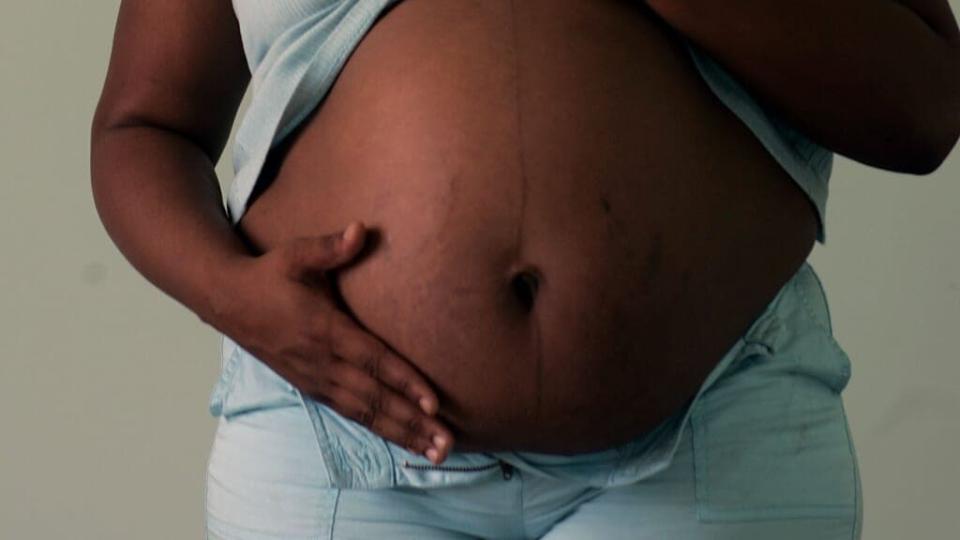White House reveals 70-page plan to make childbirth safer in U.S., especially for women of color
It lists five distinct goals, ranging from universal high-quality care to more diversity among health care workers to stronger economic and social supports.
It’s generally accepted that childbirth is a beautiful experience, but for women of color, the mere knowledge that they face a higher risk of dying during delivery than white women can make the entire process terrifying and overwhelming.
Statistics show, for instance, that Black women, regardless of income or level of education, are three times more likely than white women to die during childbirth.
To improve maternal health outcomes for all women, the White House has come up with a 70-page action plan — a blueprint— which includes five distinct goals listed in the executive summary. They range from high-quality care to more diversity among health care workers to stronger economic and social supports.

“Increase access to and coverage of comprehensive high-quality maternal health services, including behavioral health services“
Acutely aware that the existence of maternity care deserts has made it difficult for people to get timely prenatal, delivery and postpartum care, the White House will work to guarantee that everyone has access to high-quality health services, regardless of address or income.
While ensuring that the federal government sets a good example in this area, the Biden administration also will urge states to extend postpartum Medicaid coverage from two months to one year. Further, it will enhance the obstetric readiness of hospitals that don’t have obstetric units and increase the availability of perinatal addiction services through partnerships with hospitals and community-based groups.
In terms of behavioral health, the administration plans to improve the education of mental health providers and establish a 24-hour national support hotline for expectant mothers and new moms with mental health issues. These are issues, shame and guilt are among them, that research points out can increase parents’ — particularly mothers’ — depression, anxiety and stress, adversely affecting their parenting ability, The Washington Post is reporting.
“Women are especially good at taking credit for everything that’s wrong in their kids’ lives, in part because the tremendous societal pressure to raise kids ‘right’ often falls on moms, not dads,” said Lisa Marie Emerson, a University of Canterbury researcher and clinical psychologist.
“Ensure [that] those giving birth are heard and are decision-makers in accountable systems of care”
The administration is working on a plan for “equitable, high-quality maternity care provided by hospitals in several ways,” including tying federal funding to hospitals to the quality of care they provide and designating hospitals committed to high-quality care as “Birthing-Friendly.”
Important to this prong of patient care are fair treatment, respect, education and agency. “Bias and other structural inequities often result in women and people of color — particularly Black women — being treated differently than White women during pregnancy and childbirth,” the blueprint states, emphasizing that care providers will receive cultural, linguistic and bias training. “Women report having their pain ignored, requests for help denied, and decisions on medical interventions — like labor induction, for example — being made for them.”
“Advance data collection, standardization, harmonization, transparency, and research”
“Data and research are foundational to achieving every goal in this Blueprint,” the executive summary states in part.
In short, currently the data is a mess — “incomplete and inconsistent” — which exacerbates the disparities in maternal outcomes. The administration offers several solutions for cleaning up the mess. They include strengthening the analyses of maternal health data like rates of violent crime, area food security issues and availability of behavioral health providers, then providing this information to Maternal Mortality Review Committees (MMRCs). These “multi-disciplinary” committees meet annually at the state or local level to review pregnancy-related deaths. Other solutions are using housing data to improve outcomes for pregnant women who live in public housing and reviewing “anonymized” data to determine the impact that environmental issues like pollution and natural disasters have on reproductive health.
“Expand and diversify the perinatal workforce”
Simply put, the United States has a maternal health worker shortage. There is also insufficient ethnic diversity in the current pool of doulas, family physicians, licensed midwives, obstetricians and others. Further, doulas have problems getting reimbursed for their services and many insurers do not provide coverage for their services. Importantly, pregnant women who have doulas have fewer complications associated with pregnancy.

The blueprint offers a multi-pronged approach to overcome these challenges: “To address the gaps in our perinatal workforce, we will increase the number of physicians, licensed midwives, doulas, and community health workers in underserved communities; provide guidance to states to help them expand access to licensed midwives, doulas, and freestanding birth centers; and encourage insurance companies to improve reimbursement for and coverage of midwives and perinatal supports, such as doulas and nurse home visits.”
“Strengthen economic and social supports for people before, during and after pregnancy”
The administration takes a holistic approach here, recognizing that “health does not exist in a vacuum, and the health care system alone cannot fully address our maternal health crisis.” To that end, it plans to increase the number of pregnant women who are screened for social risk factors, including food insecurity and homelessness; raise awareness of employment benefits and safeguards so that women are aware, for instance, of the leave-time options after giving birth and anti-discrimination laws. Also, it plans to remove obstacles to job retention and career progression and lift “unnecessary pregnancy work and training limitations” on service members.
The White House states in the conclusion of the summary that society as a whole, including Congress, has a role in improving maternal health. “To achieve our vision, every segment of our government and society must do its part … Others can do much more to improve maternal health and Congress must play a role as well,” it states.
“We remain focused not only on understanding the circumstances contributing to every pregnancy that ends in mortality or morbidity and how to prevent such outcomes,” the blueprint stresses, “but also on every other pregnancy that leaves individuals and families with trauma or otherwise leaves diminished trust in our health care system.”
TheGrio is FREE on your TV via Apple TV, Amazon Fire, Roku, and Android TV. Please download theGrio mobile apps today!
The post White House reveals 70-page plan to make childbirth safer in U.S., especially for women of color appeared first on TheGrio.

